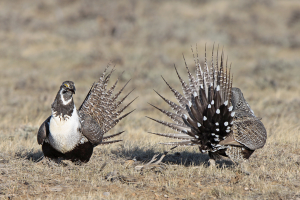TU: House bills undermine Clean Water Act
From The Outdoor Wire
Two U.S. House of Representatives committees passed separate bills the week of April 20 that would severely hinder the effort to restore protections to America’s headwater streams under the iconic Clean Water Act.
One bill, approved by the House Transportation and Infrastructure Committee, would require the U.S. Army Corps of Engineers and the Environmental Protection Agency to withdraw a rulemaking proposal that restores protections to small, headwater streams within 30 days. The second bill, passed by the House Appropriations Subcommittee on Energy and Water, would prevent the Corps from funding the enforcement of the proposed clean water rule that would protect headwaters.
“Both of these actions characterize the ongoing attack from Congress against the Clean Water Act,” said Brian Zupancic, government affairs manager for Trout Unlimited. “Small headwater streams are the lifeblood of our fisheries, providing clean water and food to downstream fish populations, as well as seasonal spawning and rearing habitat. Rather than give the Corps and EPA the chance to offer a final rule to clarify protections for these vital waters, Congress is stepping in now to pre-judge the outcome and block the process.”
The clean water rule is currently being finalized by the EPA and the Corps. It received an outpouring of public support during the rulemaking comment process, and was crafted in response to two Supreme Court rulings in the 2000s. Essentially, the court weakened Clean Water Act protections from small headwater streams and advised the EPA and the Army Corps to prove a nexus between small headwaters and the big rivers they feed. With the science done, and the connection proven, the new clean water rule simply reinstates the protections the Clean Water Act granted to small waters for the first 30 years of the act’s existence.
“The rule is nothing radical. It simply makes sure some of the most important waters in the country are given the protections they deserve and that they once enjoyed,” said Jan Goldman-Carter, senior manager, wetlands and water resources for the National Wildlife Federation. “Both the EPA and the Army Corps are working to address congressional concerns in the final rule. Rather than play politics with clean water, Congress should let the rulemaking process run its course.”
“The legislation advancing in the House is an affront to sportsmen everywhere, who have made it clear they want the agencies to produce a final rule that clearly restores clean water protections hunters and anglers can rely on,” said Jimmy Hague, director for the Center for Water Resources at the Theodore Roosevelt Conservation Partnership. “Instead, Congress is bent on derailing a deliberative rulemaking process before we even have a chance to see the impact sportsmen and many other stakeholders had during the public comment process. Congress should reverse course on these bills and reserve judgment until the process has run its course.”

